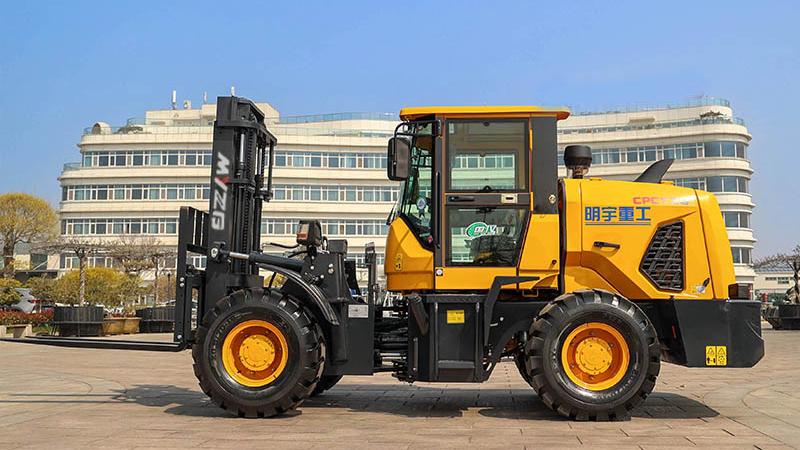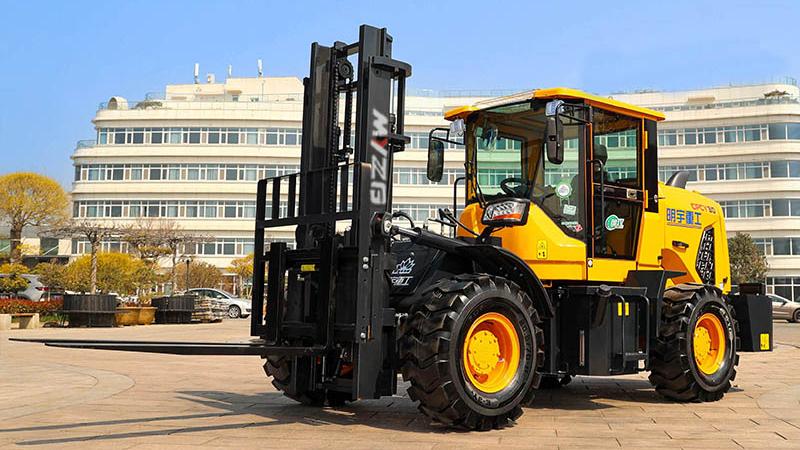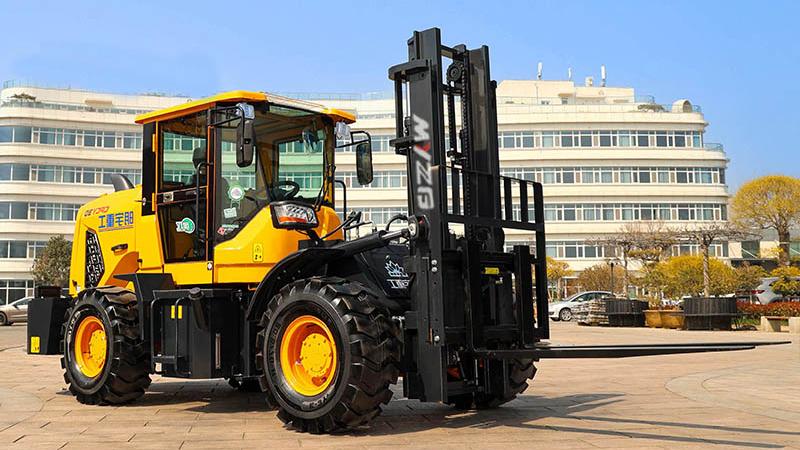The market for used rough terrain forklifts represents a critical crossroads for countless businesses in construction, agriculture, lumber, and other industries where resilience and power on unstable ground are non-negotiable. Unlike their warehouse-bound cousins, these machines are built as the workhorses of the outdoors, featuring robust tires, powerful diesel or gas engines, and formidable lifting capacities designed to tackle mud, gravel, and uneven landscapes. For a company weighing the capital expenditure of new equipment against the potential value of a pre-owned machine, understanding the nuanced landscape of used rough terrain forklift costs is paramount. The initial price tag is merely the entry point into a complex financial equation, a figure wildly variable and influenced by a constellation of factors that can mean the difference between a strategic asset that drives project success and a financial sinkhole that halts operations with costly downtime. The quest to answer "how much does it cost?" immediately branches into more precise questions: What capacity is needed? Is a standard forklift or a more versatile telehandler required? What is the machine's age, and crucially, what is its condition and provenance? The market accommodates a vast spectrum, from nearly-new models with minimal hours seeking a second home to decades-old veterans showing the scars of hard labor, with prices ranging accordingly from the tens of thousands to well over a hundred thousand dollars for premium, well-maintained used models. This initial financial outlay is just the first layer of an onion, with subsequent layers revealing the true cost of ownership, which encompasses everything from immediate repair needs and ongoing maintenance to fuel efficiency and potential resale value, making the purchase of such a machine a decision that demands diligent research and a clear-eyed assessment of both the equipment's past and the business's future needs.
Delving deeper into the specific pricing tiers and the factors that dictate them reveals a market segmented by machine capability and condition. A foundational determinant of cost is lifting capacity, with common models ranging from 5,000 to 10,000 pounds commanding significant but varying price points. A well-maintained, ten-year-old rough terrain forklift with a 6,000-pound capacity from a reputable brand like Caterpillar, John Deere, or Toyota might be found on dealer lots in the $25,000 to $40,000 range. However, this price can escalate dramatically for machines with higher capacities, such as 10,000 pounds or more, or for those equipped with advanced features like four-wheel drive and steering, which enhance capability on the most challenging job sites. The distinction between a standard mast forklift and a telehandler (or telescopic handler) is another major cost driver. Telehandlers, with their extendable booms that offer unparalleled reach and versatility, typically command a premium over standard forklifts of similar age and capacity. A used telehandler in good condition can easily see prices between $40,000 and $80,000, with newer or high-capacity models pushing even higher. Beyond specifications, the source of the purchase profoundly impacts price and risk. Buying from an established dealership offers a crucial layer of security; dealers often refurbish units, provide warranties (even if short-term), and have a reputation to uphold, which translates into a higher asking price but lower initial risk. In contrast, the private party and auction markets, including online industrial auction platforms, can offer lower upfront costs, sometimes 20-30% less than a dealer price for a comparable model. Yet, this savings comes with a "buyer-beware" caveat, as the equipment is almost always sold "as-is, where-is," with no recourse if a major engine or transmission failure occurs immediately after purchase. The condition, therefore, becomes the ultimate arbiter of value, making a pre-purchase inspection by a qualified mechanic not just a recommendation, but an absolute necessity for any serious buyer.
While the initial purchase price is the most visible number, the truly strategic acquisition is evaluated through the lens of Total Cost of Ownership (TCO), a comprehensive metric that separates a mere purchase from a wise investment. TCO for a used rough terrain forklift begins with a forensic examination of its maintenance and service history. A machine with a meticulously documented logbook, showing regular oil changes, filter replacements, and hydraulic service, even if it has high hours, is almost always a better investment than a lower-hour machine with a sporadic or unknown history. The cost of deferred maintenance can be astronomical; a neglected hydraulic system repair can run into the thousands, and a major engine overhaul can easily surpass the initial purchase price of the machine itself. The choice of powertrain also plays a long-term role in TCO. Older, Tier 2 or Tier 3 diesel engines are often sought for their simplicity and lack of complex, expensive emissions control systems like Diesel Particulate Filters (DPF) found on Tier 4 models. While a newer Tier 4 machine may be more environmentally friendly, its used price may be higher and the potential cost of repairing its emissions system can be a significant financial risk. Furthermore, the presence and condition of attachments, such as forks, booms, or buckets, add tangible value. A machine equipped with the specific attachments a business needs can save tens of thousands in aftermarket purchase and installation costs. Finally, the cost of downtime must be factored into the TCO equation. The cheapest machine on the lot is the most expensive one if it spends more time in the shop than on the job site, delaying projects and missing deadlines. Investing in a slightly more expensive, but demonstrably reliable, unit from a reputable source is effectively an insurance policy against operational disruption, protecting the business's revenue stream and reputation, which are far more valuable than any savings gained from a risky, low-ball purchase.
Ultimately, navigating the used rough terrain forklift market is an exercise in strategic due diligence, where knowledge and preparation are the most valuable currencies. The final decision hinges on aligning the machine's capabilities and proven condition with the specific, unforgiving demands of the intended application. A small farm needing occasional lifting might find tremendous value in an older, mechanically-sound machine for $15,000-$25,000, accepting a higher risk of repairs for a lower capital outlay. In contrast, a large construction firm working on a tight, high-stakes project timeline would be far better served by allocating $50,000-$70,000 for a newer, dealer-vetted telehandler with a warranty, prioritizing reliability and uptime over initial savings. The modern buyer must also be cognizant of market fluctuations; supply chain disruptions and new equipment lead times can inflate the prices of desirable used models, making swift and informed action necessary. The journey to ownership should be methodical: start by clearly defining operational requirements for capacity, reach, and attachments; set a budget that includes a contingency fund for immediate repairs and ongoing maintenance; then, scour the market through dealers, online listings, and auctions with a critical eye. The crucial final step, before any money changes hands, is the independent mechanical inspection. This small upfront cost can reveal hidden issues, provide leverage for price negotiation, and prevent catastrophic financial losses. In the world of used heavy equipment, the true cost is not the number on the sales agreement, but the total investment required to keep the machine productively and profitably moving materials, day in and day out, in the toughest conditions imaginable.
Post time:Oct.22.2025



